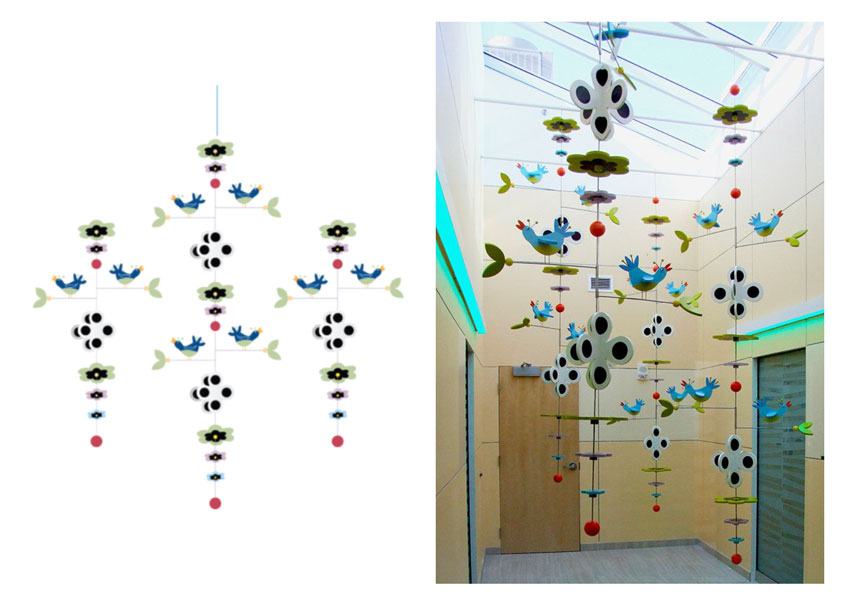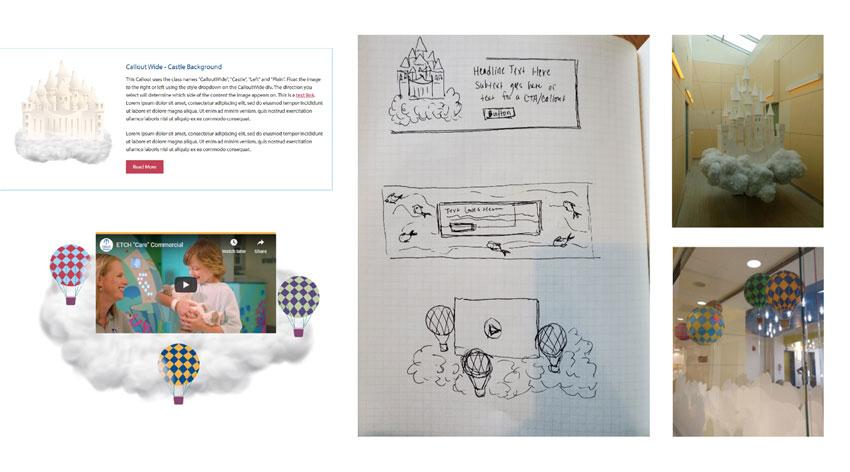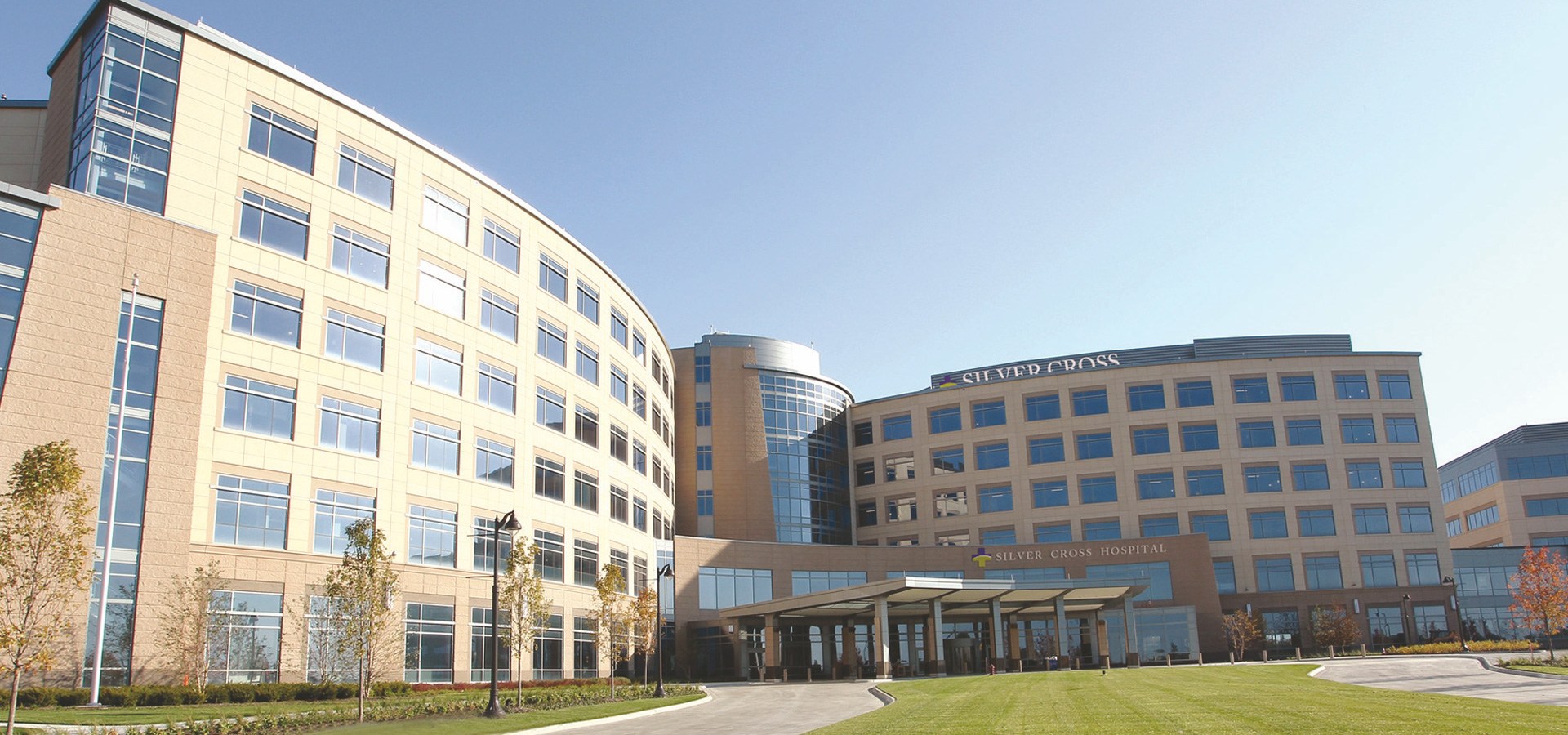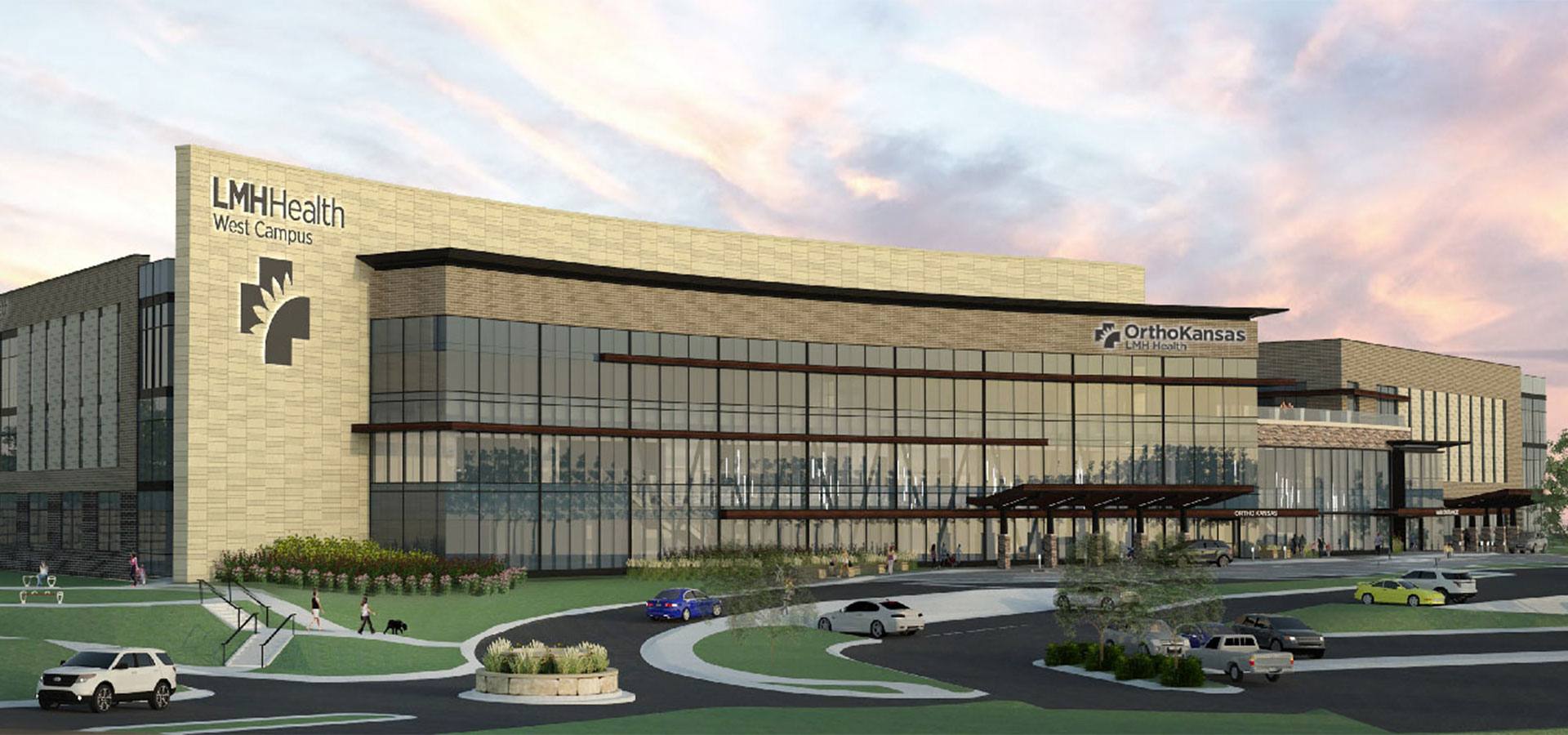East Tennessee Children’s Hospital is the only comprehensive regional pediatric center in Tennessee accredited by the Joint Commission. The Knoxville, TN-based organization is dedicated to children and ensuring they get the best possible healthcare in a family-centered setting. When patients and their families come to East Tennessee Children’s Hospital they receive superior acute, serious, and specialty care in a unique environment. Large-scale murals, fish tanks, and three-dimensional art installations greet patients and visitors at every turn, creating an atmosphere of inspiration.
When it was time for East Tennessee Children’s Hospital to redesign the organization’s web presence, it was important to the team to bring that feeling to the web. They needed a digital partner who would get to know their organization at a personal level and create a plan that not only delivered a new site with an intuitive user experience and improved functionality, but also brought their unique, thoughtful brand to life. Together East Tennessee Children’s Hospital and Geonetric built a site that aims to ensure site visitors leave the web session with the same feeling of hope and confidence they do leaving an East Tennessee Children’s Hospital facility.
Choosing a content management system (CMS) to support a vital regional resource
East Tennessee Children’s Hospital had outgrown their website. The site lacked much-needed functionality, such as a location directory. There was also an opportunity to improve the provider and service listings – especially considering East Tennessee Children’s Hospital serves as a community resource for 16 counties in East Tennessee, Southeast Kentucky, and Southwest Virginia. With a website that is truly a resource hub for pediatric services across a large geographic footprint, East Tennessee Children’s Hospital needed a content management system that made managing and presenting complex service, location, and provider data easier. That’s why East Tennessee Children’s Hospital chose Geonetric’s VitalSite.
Their new site, which launched in February 2020, provides East Tennessee Children’s Hospital with sophisticated provider, location, and service directories. Using analytics and heat mapping to evaluate how users navigated to information, East Tennessee Children’s Hospital and the Geonetric team made data-driven decisions around information architecture, dynamic content panels, CTAs, and directory search and A-Z listings to ensure site visitors can easily find the provider, program, or location they need.
Additional features of the site include HIPAA-compliant online forms through Formulate, integration with Kids Health content library, and flexible campaign templates that allow the East Tennessee Children’s Hospital team to easily create landing pages for popular events such as the Fantasy of Trees.
Telling a story through design
East Tennessee Children’s Hospital expressed that the new design needed to convey that this is a hospital where your child is going to feel like a kid while visiting. The design also needed to represent the high level of expertise at East Tennessee Children’s Hospital and ensure the site visitor felt like their family would be in good hands.
Geonetric achieved these goals by considering the recommended content and page hierarchy and using custom, brand-driven elements, such as East Tennessee Children’s Hospital’s bright, inviting color palette. The expert design team also included purposeful micro-interactions in key places on the site, using hover styles on the navigation and buttons throughout the site.
East Tennessee Children’s Hospital’s unique design is wrapped in a responsive, fast-loading site that meets WCAG 2.0 guidelines, all important elements to designing an optimal user-experience.
The real showstopper belongs to the illustrations. Throughout the website you’ll see custom graphics unique to East Tennessee Children’s Hospital, bringing key artwork at the hospital to life on the web. These include a popular mobile, the floating castle, a fish tank, and hot air balloons.


Engaging site visitors and making the marketing team’s life easier
Since launching in February 2020, the East Tennessee Children’s Hospital team is enjoying the site and the flexibility and control the new CMS gives them.
In the first three months after launch, engagement has improved. The bounce rate has dropped 22.61% site wide and mobile specifically has had a 16.66% improvement in bounce rate. Pages per session have increased 1.70% and average session duration has increased 12.70% from 1:31 to 1:43.










